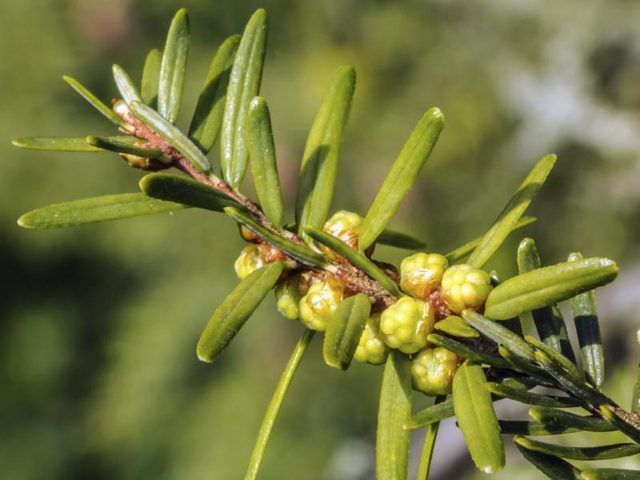Bulbs
Flower Basics
Flower Beds & Specialty Gardens
Flower Garden
Garden Furniture
Garden Gnomes
Garden Seeds
Garden Sheds
Garden Statues
Garden Tools & Supplies
Gardening Basics
Green & Organic
Groundcovers & Vines
Growing Annuals
Growing Basil
Growing Beans
Growing Berries
Growing Blueberries
Growing Cactus
Growing Corn
Growing Cotton
Growing Edibles
Growing Flowers
Growing Garlic
Growing Grapes
Growing Grass
Growing Herbs
Growing Jasmine
Growing Mint
Growing Mushrooms
Orchids
Growing Peanuts
Growing Perennials
Growing Plants
Growing Rosemary
Growing Roses
Growing Strawberries
Growing Sunflowers
Growing Thyme
Growing Tomatoes
Growing Tulips
Growing Vegetables
Herb Basics
Herb Garden
Indoor Growing
Landscaping Basics
Landscaping Patios
Landscaping Plants
Landscaping Shrubs
Landscaping Trees
Landscaping Walks & Pathways
Lawn Basics
Lawn Maintenance
Lawn Mowers
Lawn Ornaments
Lawn Planting
Lawn Tools
Outdoor Growing
Overall Landscape Planning
Pests, Weeds & Problems
Plant Basics
Rock Garden
Rose Garden
Shrubs
Soil
Specialty Gardens
Trees
Vegetable Garden
Yard Maintenance
How to Care for Hemlock Trees
How to Care for Hemlock Trees. Slow-growing, long-lived hemlocks (Tsuga spp.) are large evergreen forest trees which lend elegance to the landscape. About eight to 10 species of hemlocks are native to North America and eastern Asia. Those most widely used in landscaping are eastern hemlock (Tsuga canadensis, hardy in U.S. Department of Agriculture...

Slow-growing, long-lived hemlocks (Tsuga spp.) are large evergreen forest trees which lend elegance to the landscape. About eight to 10 species of hemlocks are native to North America and eastern Asia. Those most widely used in landscaping are eastern hemlock (Tsuga canadensis, hardy in U.S. Department of Agriculture plant hardiness zones 3 through 8), western hemlock (Tsuga heterophylla, USDA zones 6 through 7) and Northern Japanese hemlock (Tsuga diversifolia, USDA zones 4 through 7). Each species has horticultural cultivars. All hemlocks need similar care, with some variations depending on species.
Soil and Water
Hemlocks tolerate a variety of soil types, but it's best to avoid heavy soils, since they need good drainage. Plants prefer moist soil but shouldn't be kept soggy. On sites that are constantly wet, eastern hemlock suffers from bark splitting and root rot. For the first year in the landscape, water hemlocks weekly if there is no rain, supplying about 1 gallon of water for every gallon of the original pot size or root ball size of the tree. After the first year, provide about 1 inch of water per week when there is limited rain or high temperatures.
Pruning Hemlocks
The natural pyramidal form of a hemlock is an asset as a specimen tree, especially if the branches extend down to the ground. Eastern hemlock can reach to 70 feet tall, and western hemlock can soar to almost 230 feet in its natural habitat. If grown in their natural form, they don't need pruning except to remove damaged or diseased branches. Eastern hemlocks accept shearing to keep them to desired heights and shapes and make good hedges and screens. Before pruning or shearing hemlock trees, disinfect pruning tools with a cloth soaked in rubbing alcohol to prevent spreading disease.
Fertilizer Needs
Fertilize hemlocks once a year in fall before the ground freezes so fertilizer is ready for plant use in the spring. Use an evergreen fertilizer such as 10-8-6 applied at the rate of 1 tablespoon for each foot of the tree's height. Scatter the fertilizer around the drip line of the tree, work it into the soil and water it in. If a hemlock becomes infested with the hemlock woolly adelgid, don't apply fertilizer containing nitrogen. The new growth produced in response to nitrogen fertilizer allows the pest to multiply, increasing the damage to the tree.
The Hemlock Woolly Adelgid
An imported pest related to aphids, the hemlock wooly adelgid infests hemlock foliage. Eastern hemlock and Carolina hemlock (Tsuga caroliniana, USDA zones 6 to 7) have little resistance to the insect. Trees can be defoliated and death can result. Other hemlock species don't seem seriously impacted by the adelgid. Look for fuzzy white insects at leaf bases. Treat small-sized hemlocks and hedges with horticultural oil as soon as you notice the insects. Wear long sleeves, long pants, closed shoes and waterproof gloves. Don't apply the oil during windy conditions or within 24 hours of predicted rain. In the summer, use 2 tablespoons of oil mixed with one gallon of water. For winter applications, mix 5 tablespoons of oil in 1 gallon of water. Spray all surfaces of the leaves, branches, trunk and stems, wetting them thoroughly. Don't apply if temperatures are above 90 degrees Fahrenheit or below 40 degrees F, and don't allow people or pets into the treated area until the spray is dry. For treating large trees, consult a professional.
Other Problems
If hemlock trees are in good health, they have few problems with pests or diseases. When plants are stressed by drought or by waterlogged soils, they're more susceptible to fungal diseases such as canker. Canker spreads by fungal spores entering wounds on branches. Look for dead areas that exude resin. Remove diseased branches, cleaning pruning tools between each cut with alcohol. Avoid canker by preventing wounds on hemlock trees.